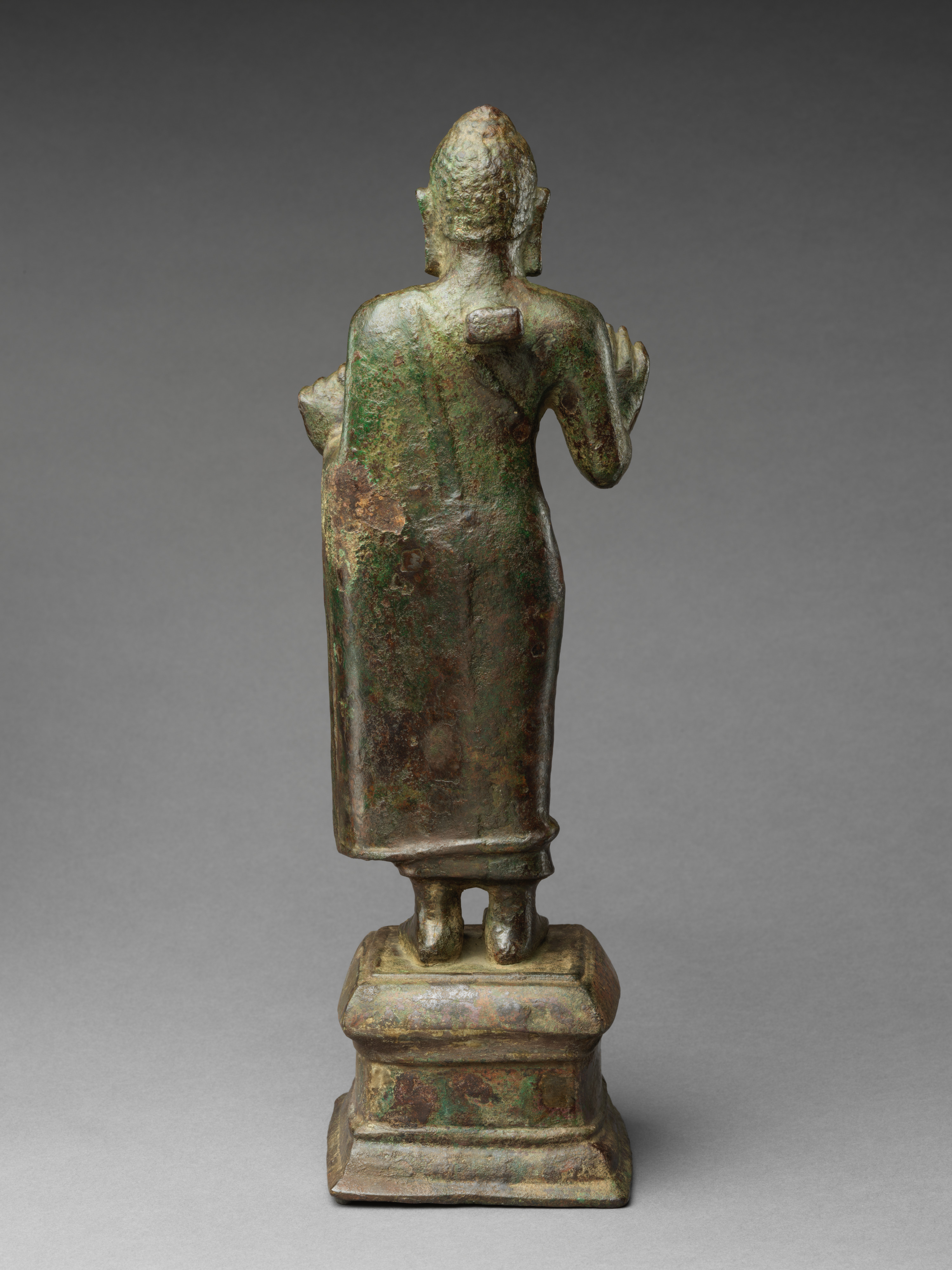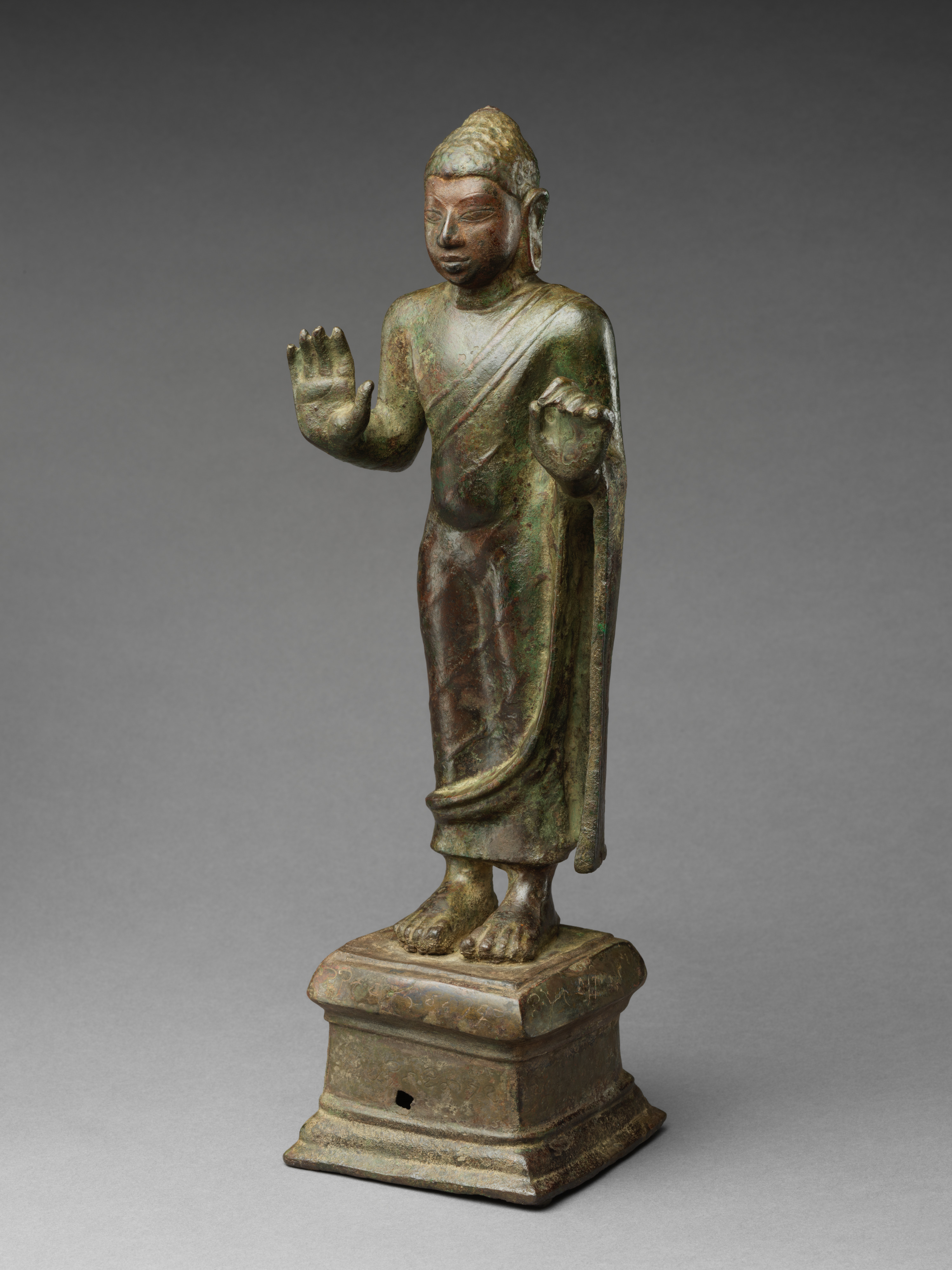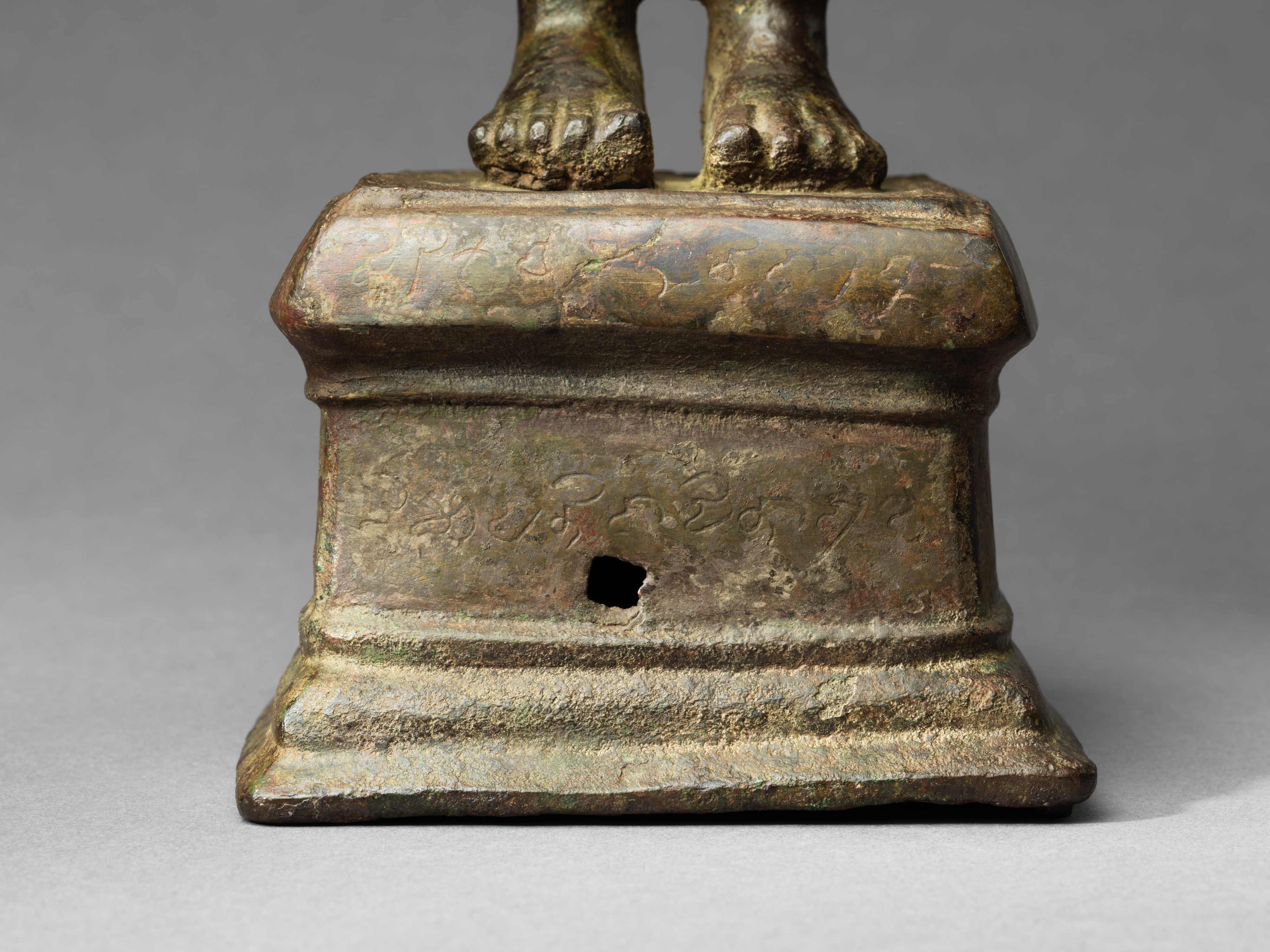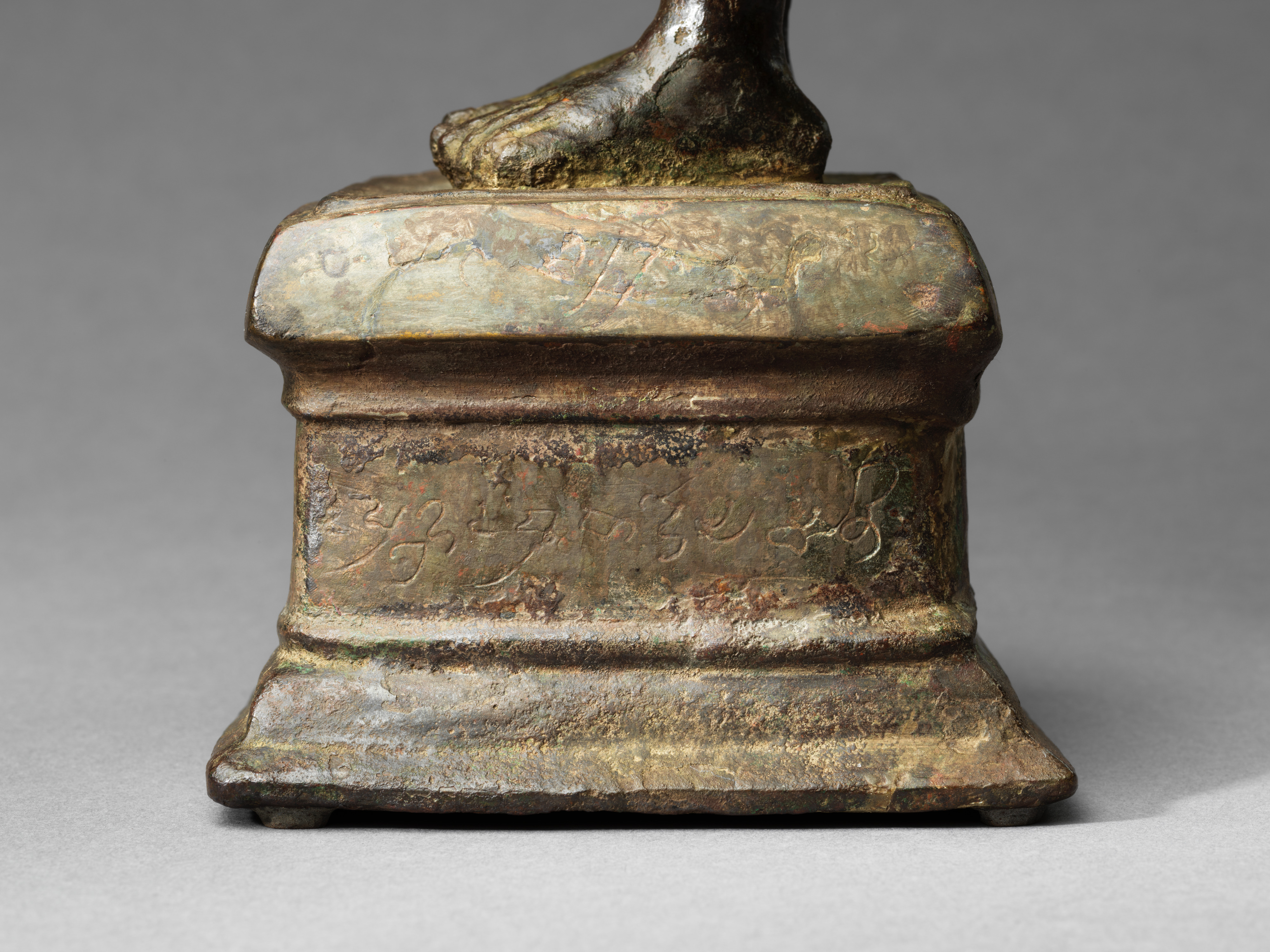Buddha offering protection
India, unknown provenance in the Deccan, likely Andhra Pradesh
Not on view
The production of cast-metal images marked a new stage in Buddhist devotional practice. Rituals and texts for their care and worship became regular features of monastic life by the middle of the first millennium. This bronze Buddha represents the later development of Deccan Buddhist imagery, which grew stylistically out of the stone sculpting tradition. This is seen in the body’s symmetrical frontality and the drapery’s curvilinear folds. The Buddha has traces of an inscription on the pedestal that names a monastery—otherwise unrecorded—and a donor. The script firmly dates this icon to the fifth-century Deccan, in all likelihood the Andhra territories.
Due to rights restrictions, this image cannot be enlarged, viewed at full screen, or downloaded.
This artwork is meant to be viewed from right to left. Scroll left to view more.







